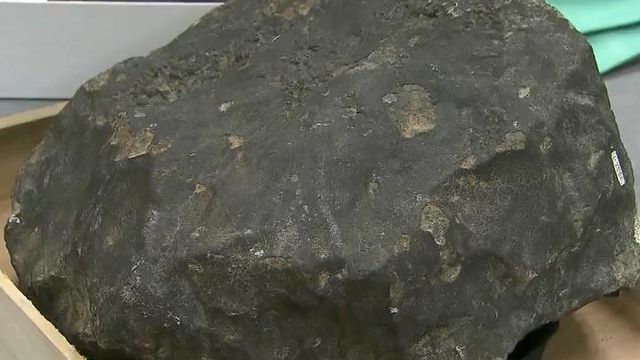Raleigh museum displays NC meteorite from 1930s
A meteor shot across Russia's Ural Mountains on Friday, injuring more than 1,000 people. Meanwhile, nearly 6,000 miles away, a chunk of a similar meteorite sat inside the North Carolina Museum of Natural Sciences in Raleigh.
Posted — UpdatedTucked in a small corner of the museum, visitors can view a small piece of the meteorite that came down in the Farmville/Kinston area on Dec. 4, 1934. Museum officials said it dates beyond the 1930s.
“I mean, early solar system … 3.56 billion years,” said curator Chris Tacker.
Then-curator Harry Davis purchased the meteorite for $40. He said it was found in a cornfield, according to his handwritten notes, which scientists continue to use to gather information
.
Davis later tracked it from Charlotte to Farmville and Kinston, "but over Farmville and over Kinston, it detonated, just like the one in Russia, and the explosion shook the whole town of Kinston,” Tacker said.
Weighing more than 100 pounds, the meteorite made a crater about 3.5 feet deep and 6 feet wide.
“So, this is a pretty good sized meteorite,” Tacker said.
Even so, it's not nearly as big as what came down in Russia. Reports indicate that meteor was about 18 to 20 feet across.
“There will be a lot more information on the new meteorite coming in, so I expect we will learn a lot more from that one than we will from this one,” Tacker said.
• Credits
Copyright 2024 by Capitol Broadcasting Company. All rights reserved. This material may not be published, broadcast, rewritten or redistributed.





